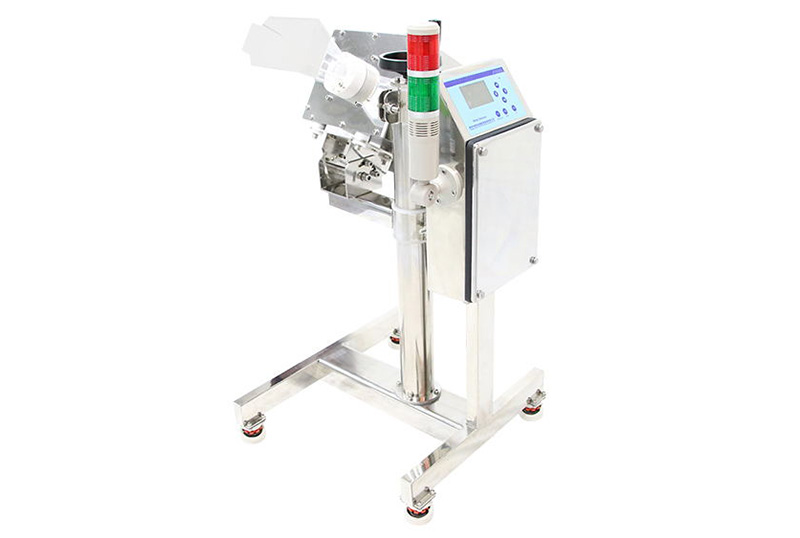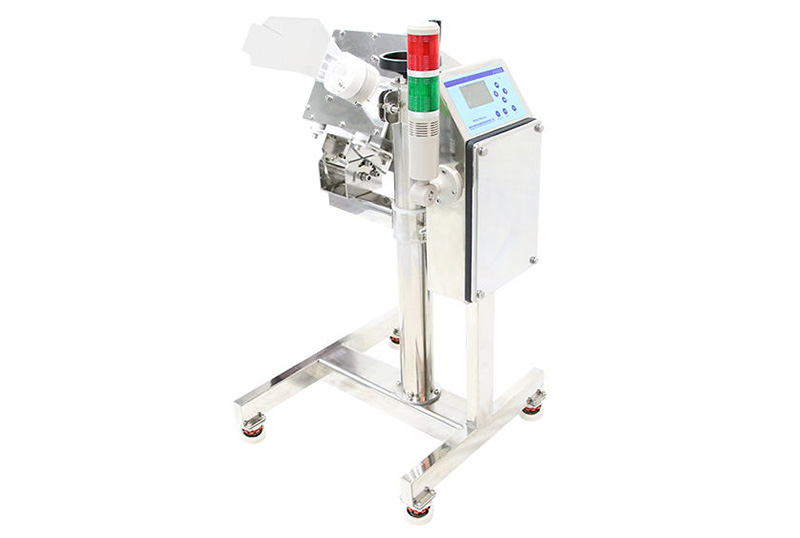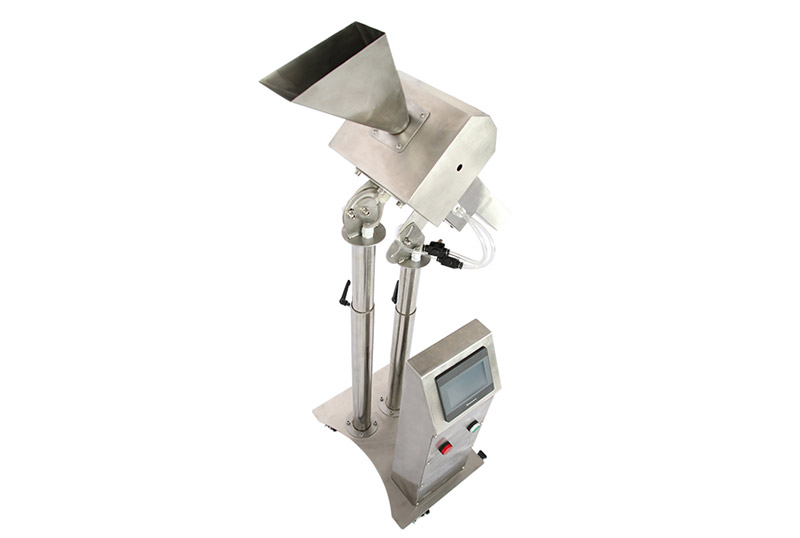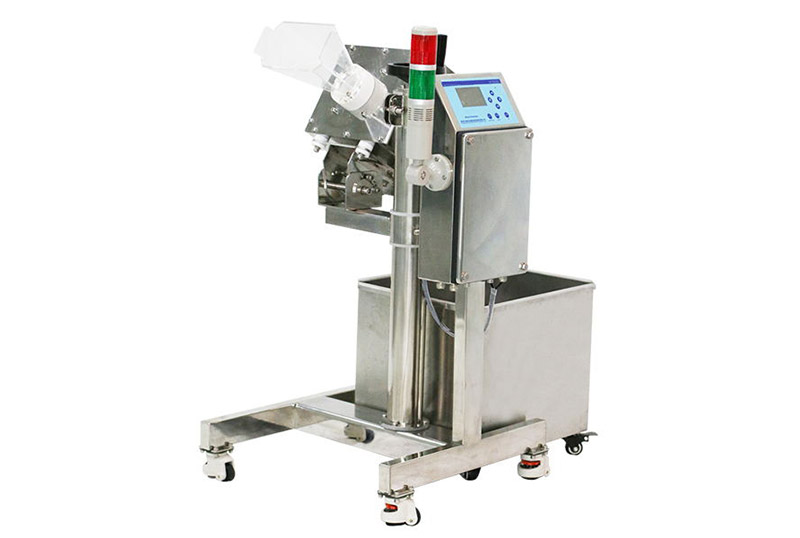Pharmaceutical Industry
In the pharmaceutical industry, implementing metal detectors is a crucial component of maintaining compliance with Current Good Manufacturing Practices (cGMP) and ensuring product quality and safety. Metal detectors play a vital role in detecting and preventing the presence of metal contaminants in pharmaceutical products, which is essential for meeting regulatory standards and safeguarding patient well-being. Let's explore how metal detectors are integrated into the pharmaceutical production process to adhere to cGMP and Good Documentation Practice (GDP) standards during audits:
## I. Importance of Metal Detectors in the Pharmaceutical Industry
### A. Compliance with cGMP
1. **Quality Control:** Metal detectors are integral to quality control processes, helping pharmaceutical companies meet cGMP standards by ensuring the absence of metal contaminants in finished products.
2. **Regulatory Requirements:** Regulatory authorities, such as the U.S. Food and Drug Administration (FDA) and the European Medicines Agency (EMA), require pharmaceutical manufacturers to implement measures to prevent metal contamination.
### B. Patient Safety
1. **Preventing Contamination:** Metal detectors contribute to patient safety by preventing the release of pharmaceutical products contaminated with metal particles.
2. **Avoiding Adverse Effects:** Ensuring that patients do not experience adverse effects or harm due to metal contamination in medicinal products.
## II. Integration of Metal Detectors in Pharmaceutical Production
### A. Raw Material Inspection
1. **Incoming Raw Materials:** Metal detectors are employed at the initial stage of production to inspect incoming raw materials, such as active pharmaceutical ingredients (APIs) and excipients, for any metal contaminants.
2. **Contaminant Rejection:** Automatic rejection systems can be integrated to remove contaminated raw materials before they enter the manufacturing process.
### B. Processing and Mixing
1. **Inline Inspection:** Metal detectors integrated into processing lines inspect pharmaceutical formulations during mixing and granulation for any metal particles introduced during these stages.
2. **Quick Rejection Systems:** Fast-acting rejection systems ensure that contaminated products are immediately removed from the production line.
### C. Tablet Pressing and Capsule Filling
1. **Continuous Monitoring:** Metal detectors along the tablet pressing and capsule filling lines continuously monitor pharmaceutical products for any metal contamination introduced during these stages.
2. **Quick Rejection Systems:** Rapid rejection systems ensure that contaminated products are swiftly removed from the production line.
### D. Final Product Inspection
1. **End-of-Line Inspection:** Metal detection at the end of the production process ensures that metal contaminants are not present in the final pharmaceutical products.
2. **Packaging Inspection:** Ensuring that metal contaminants are not introduced during the packaging process.
## III. Benefits of Metal Detectors in Pharmaceutical Production
### A. Regulatory Compliance
1. **Meeting cGMP Standards:** Metal detectors contribute to cGMP compliance by preventing, detecting, and addressing metal contamination risks in pharmaceutical products.
2. **Audit Preparedness:** Ensuring readiness for regulatory audits by implementing robust metal detection systems and maintaining thorough documentation.
### B. Product Quality
1. **Ensuring Purity:** Metal detectors play a vital role in ensuring the purity of pharmaceutical products by preventing the inclusion of metal contaminants.
2. **Maintaining Product Integrity:** Enhancing the overall integrity and quality of pharmaceutical products by eliminating the risk of metal contamination.
### C. Patient Safety
1. **Preventing Adverse Events:** Metal detectors safeguard patient safety by reducing the risk of adverse events associated with the ingestion of pharmaceuticals containing metal particles.
2. **Enhancing Consumer Trust:** Contributing to the reputation of pharmaceutical manufacturers by prioritizing patient safety and product quality.
## IV. Implementing an Effective Metal Detection System
### A. Choosing Appropriate Equipment
1. **Type of Metal Detector:** Selecting the right type of metal detector based on the specific needs of the pharmaceutical production process, such as conveyor-based detectors or gravity-fed systems.
2. **Sensitivity Levels:** Configuring the sensitivity levels of the metal detector to detect both ferrous and non-ferrous metals at the required thresholds.
### B. Integration with Production Line
1. **Strategic Placement:** Installing metal detectors at strategic points along the production line to ensure thorough inspection.
2. **Integration with Conveyors:** Seamlessly integrating metal detectors with conveyor systems for efficient and continuous inspection.
### C. Documentation and Records
1. **Record-Keeping:** Maintaining comprehensive records of metal detector calibration, performance checks, and rejection instances.
2. **Audit Trail:** Establishing an audit trail to document every step of the metal detection process and corrective actions taken.
### D. Employee Training
1. **Training Programs:** Providing comprehensive training programs for personnel involved in operating and maintaining metal detection systems.
2. **GMP and GDP Training:** Ensuring that employees are trained in cGMP and Good Documentation Practice to support compliance.
## V. Conclusion
Metal detectors are indispensable in the pharmaceutical industry for maintaining compliance with cGMP and ensuring the safety and quality of medicinal products. By implementing effective metal detection systems at various stages of the production process, pharmaceutical manufacturers can minimize the risk of metal contamination and demonstrate a commitment to patient safety and regulatory compliance. Regular maintenance, proper training, and adherence to documentation practices are essential for achieving a successful and effective metal detection program in pharmaceutical production.
The Pharmaceutical and Nutraceutical sector covers a wide range of products which typically include; tablets, capsules, soft gels, lozenges, and many more. These products are inspected to eliminate any contaminants that may be present so that they do not make it to the consumer.
The typical contaminants inspected in the pharmaceutical and nutraceutical are; all metals (Ferrous, Non-Ferrous & Stainless steel). Additionally, some manufacturers have the need to inspect for product integrity within blister packs (broken or missing product). Through understanding the challenges faced by each sector and application, viking is able to design machinery to help ease any potential issues and help to contribute to maintain maximum uptime.





